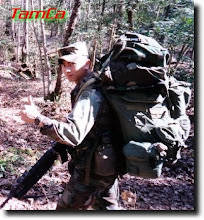Some of OSPF's strengths include:
It converges quickly, compared to distance-vector protocol.
Routing update packets are small, and only reflect the change (it doesn't send the whole routing table).
It's not prone to routing loops.
It scales very well for large networks.
Bandwidth is taken into account when it selects a link to install in the routing table.
It support Variable-Length Subnet Masks (VLSM)
While many people get confused by the Wild Card Mask that is required in the Network statement, I find it's not that difficult at all.
Let's say you need to advertise the network 172.30.105.84 255.255.255.252 and wants to find the wild card mask. All you have to do is take 255 and subtract each octet of the subnet mask. So in this case you would advertise the network as:
Router(config)# router ospf {process number}
Router(config-router)# network 172.30.105.84 0.0.0.3 area 0
Where do you get the 0.0.0.3? Using the rule above, you take 255 - 255 = 0 (in the first 3 octets) and 255 - 252 = 3 (in the last octet). See, it's not that hard to find the wild card mask at all.
Where do I get 255 from, you ask? Each octet is made up of 8 bits and 255 is the maximum value that 8 bits can hold.
Here are some common OSPF commands that are very useful in checking the status of OSPF configuration:
show ip ospf
show ip ospf neighbor
show ip ospf interface
show ip route ospf
Further readings:
http://www.cisco.com/univercd/cc/td/doc/product/software/ios124/124cr/hirp_r/rte_osph.htm#wp1001842
http://en.wikipedia.org/wiki/Open_Shortest_Path_First

No comments:
Post a Comment